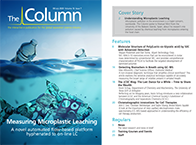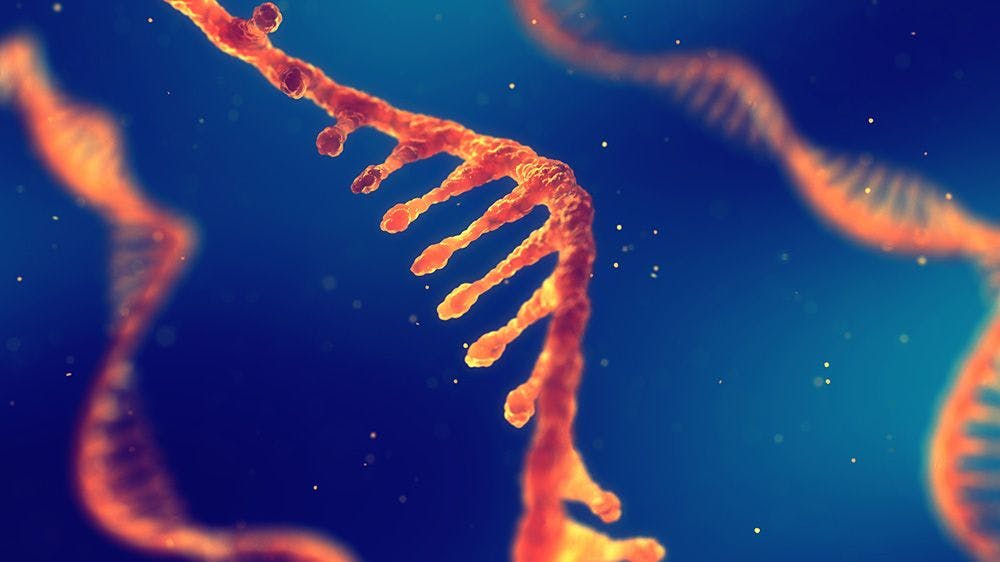The LCGC Blog: Last Dance, for a While—Time to Share the Wealth
Kevin Schug takes a break from his popular blog and reveals an exciting new collaboration between LCGC and the American Chemical Society Analytical Division, Subdivision on Chromatography and Separations Chemistry, to keep readers abreast of the latest trends and developments in separation science with a new series of blogs from members of this group.
complize | M.Martins/stock.adobe.com

As academic professionals, we seek to have the resources we need to train the next generation of researchers and to have others take notice of our efforts. In my case, as is probably true for many academics, getting started was tough and a lot of hard work. With each successful experiment performed, paper published, new instrument acquired, degree conferred, and grant or contract won, we made strides forward. The failures have far outweighed the successes in numbers, but each success has held far more significance than each failure.
Along the way, a few specific opportunities have provided me some significant advancement and exposure. One of these has been writing the LCGC blog. The invitation from LCGC to do this came toward the end of 2012. Such a concept was quite foreign to me. I knew that people wrote blogs, but I never really followed them. Even so, this was a pivotal time in my career. We had just finalized the first installation of instrumentation that would ultimately become the Shimadzu Institute for Research Technologies at the University of Texas Arlington, USA. Part of that agreement included an endowed professorship that would give me some significant discretionary funds to perform research. Further, we had recently embarked on efforts to investigate the potential environmental impact of unconventional oil and gas extraction processes. This effort would lead very quickly to the creation of the Collaborative Laboratories for Environmental Analysis and Remediation (CLEAR), a consortium designed to pull together the needed expertise to handle the multifaceted nature of our environmental research, as well as a new vehicle and brand through which we could raise funds. I was also already working with VUV Analytics, Inc., and they were close to launching their first commercial product (full disclosure: I am a member of the scientific advisory board for VUV). With all of these developments, a new channel into the scientific community through the LCGC blog sounded like a nice tool to have in my toolbox.
At first, it seemed quite daunting to come up with a technical topic to discuss each month. After a while, I found that was not the case. I could write about whatever was on my mind and rarely did I need to do any special research to compose the blog. It became a place where I could discuss technical topics of interest, share an overview of recent publications or sets of publications from my group or by others, review conferences I attended, talk about teaching at the university level, or regale everyone with my various experiences and ideas. For example, if you want to consider how working in an analytical laboratory might benefit you in a zombie apocalypse, check out my popular blog entry from October, 2013 (1). Basically, I could write about anything I thought the readers of LCGC might like to read.
Very early on, I realized the immense value of the LCGC blog as a means to reach a much broader audience with my ideas. Circulation of the newsletters that have featured my blog exceeds 45 000 subscribers worldwide. I am sure not everyone reads my entries, but I have always been heartened by comments I have received (both positive and negative, though the positive have far outweighed the negative) from readers.
More recently, I have been evaluating and weighing the various ways I can and should spend my time. I wrote a recent blog about the various opportunities I have been afforded in the past couple of years, after having risen to the top of academic faculty ranks (2). One thing I did not mention is my role, for the past few years, as an executive committee member in the Subdivision on Chromatography and Separations Chemistry (SCSC), part of the Division of Analytical Chemistry in the American Chemical Society (https://acsanalytical.org/subdivisions/separations/). The current group of officers has charged itself with reinvigorating the subdivision. Efforts have and are being made to increase the visibility of the subdivision, including new initiatives to support and expand dissemination of separation science chemistry research and education. For example, the SCSC is finalizing a partnership with ChromAcademy to promote quality online learning for continued professional development. Stay tuned for more about that.
With my new endeavours taking an increasing amount of my time, and the knowledge that other separation scientists are making their way up the ranks and trying to make a name for themselves, I am pleased to hand over the LCGC blog to the SCSC. The LCGC blog has been a valuable tool for me, and I think others should have the opportunity to use it to their benefit, as well.
That said, the real benefit will come to us all, as we will be able to view much wider perspectives from leading scientists throughout the world. For example, your next instalment of the blog will come from Assistant Professor Katelynn Perrault at Chaminade University of Honolulu in Hawaii. She is an innovator in the use of comprehensive two-dimensional gas chromatography (GC×GC) for forensics applications, among others. She is also a recent recipient of the 2020 Satinder Ahuja Award for Young Investigators in Separation Science, an award the SCSC has a significant stake in conferring to rising stars. Month by month, new perspectives and topics will be discussed by a host of fantastic scientists. And perhaps every now and then, I will jump back in and provide new perspectives of my own.
Thank you to those who have been casual or faithful readers of my blog. I consider it a privilege to have been able to take up a little of your time each month, and I hope that my insights have been useful and interesting to you. Thanks also to LCGC for affording me this exceptional opportunity, and to my students and colleagues for providing me plenty of excellent material to cover. I am confident that the future brings many new and exciting advances to come, and the LCGC blog will always be one good place to read about them.
E-mail: kschug@uta.edu
Website: www.chromatographyonline.com
References
- K.A. Schug, “What to Do if Zombies Infiltrate the Analytical Laboratory: A Brief Survival Guide.” The LCGC Blog, 7 October 2013. http://www.chromatographyonline.com/lcgc-blog-what-do-if-zombies-infiltrate-analytical-laboratory-brief-survival-guide
- K.A. Schug, “Climbing the Academic Career Ladder: Choices at the Top.” The LCGC Blog, 7 January 2020. http://www.chromatographyonline.com/lcgc-blog-climbing-academic-career-ladder-choices-top-0


















Thermodynamic Insights into Organic Solvent Extraction for Chemical Analysis of Medical Devices
April 16th 2025A new study, published by a researcher from Chemical Characterization Solutions in Minnesota, explored a new approach for sample preparation for the chemical characterization of medical devices.
Sorbonne Researchers Develop Miniaturized GC Detector for VOC Analysis
April 16th 2025A team of scientists from the Paris university developed and optimized MAVERIC, a miniaturized and autonomous gas chromatography (GC) system coupled to a nano-gravimetric detector (NGD) based on a NEMS (nano-electromechanical-system) resonator.
Miniaturized GC–MS Method for BVOC Analysis of Spanish Trees
April 16th 2025University of Valladolid scientists used a miniaturized method for analyzing biogenic volatile organic compounds (BVOCs) emitted by tree species, using headspace solid-phase microextraction coupled with gas chromatography and quadrupole time-of-flight mass spectrometry (HS-SPME-GC–QTOF-MS) has been developed.
A Guide to (U)HPLC Column Selection for Protein Analysis
April 16th 2025Analytical scientists are faced with the task of finding the right column from an almost unmanageable range of products. This paper focuses on columns that enable protein analysis under native conditions through size exclusion, hydrophobic interaction, and ion exchange chromatography. It will highlight the different column characteristics—pore size, particle size, base matrices, column dimensions, ligands—and which questions will help decide which columns to use.
Thermodynamic Insights into Organic Solvent Extraction for Chemical Analysis of Medical Devices
April 16th 2025A new study, published by a researcher from Chemical Characterization Solutions in Minnesota, explored a new approach for sample preparation for the chemical characterization of medical devices.
Sorbonne Researchers Develop Miniaturized GC Detector for VOC Analysis
April 16th 2025A team of scientists from the Paris university developed and optimized MAVERIC, a miniaturized and autonomous gas chromatography (GC) system coupled to a nano-gravimetric detector (NGD) based on a NEMS (nano-electromechanical-system) resonator.
Miniaturized GC–MS Method for BVOC Analysis of Spanish Trees
April 16th 2025University of Valladolid scientists used a miniaturized method for analyzing biogenic volatile organic compounds (BVOCs) emitted by tree species, using headspace solid-phase microextraction coupled with gas chromatography and quadrupole time-of-flight mass spectrometry (HS-SPME-GC–QTOF-MS) has been developed.
A Guide to (U)HPLC Column Selection for Protein Analysis
April 16th 2025Analytical scientists are faced with the task of finding the right column from an almost unmanageable range of products. This paper focuses on columns that enable protein analysis under native conditions through size exclusion, hydrophobic interaction, and ion exchange chromatography. It will highlight the different column characteristics—pore size, particle size, base matrices, column dimensions, ligands—and which questions will help decide which columns to use.
